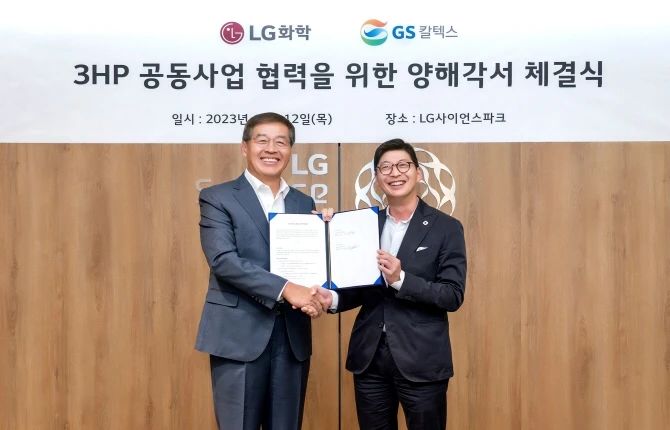On October 12, LG Chem and GS Caltex (GS
Caltex signed a memorandum of understanding to further strengthen the two parties’ joint development of environmentally friendly bio-based materials technology. The project focuses on 3HP (3-hydroxypropionic acid), an important raw material for environmentally friendly biodegradable polymers.

The memorandum of understanding between the two parties is based on the signing of the 2021 Joint Development Agreement (JDA) between the two companies. The two parties built a 3HP test factory at the GS Caltex Yeosu factory in July 2021. The recently completed factory lays the foundation for prototype production, which is expected to begin in the first quarter of 2024.

Super Chemical – Bio-based Acrylic
3HP is one of the 12 platform compounds announced by the U.S. Department of Energy. But industrialization is still difficult. 3HP is an isomer of lactic acid. Although it has a simple structure, it has two functional groups (hydroxyl and carboxyl) in its molecular structure, so the chemical properties of 3-hydroxypropionic acid are more active. The traditional chemical synthesis method to produce 3-HP does not meet the requirements of green environmental protection and sustainable development, and the use of green biotechnology production has broad prospects. With the development of synthetic biology, teams around the world are realizing the research and development and high-yield and mass-production experiments of 3-hydroxypropionic acid (3-HP).
3HP is produced through microbial fermentation of plant-derived materials and is considered an environmentally friendly substance. Polymer materials derived from 3HP offer excellent biodegradability and flexibility, making them a viable alternative to a variety of disposable materials. Additionally, 3HP can be converted into bio-based acrylic acid. Bio-based acrylic is generally considered to be the next generation of super chemical products, and its downstream products include super absorbent polymers (SAP) as well as coatings, adhesives, membrane materials and carbon fibers. Although attempts are being made around the world to develop 3HP-related technologies, commercialization has not yet been achieved so far.
These excellent properties of 3HP make it of great commercial development value, especially in the application of degradable plastics, and has attracted widespread attention from scientists and industries in various countries. Poly-3-hydroxypropionic acid material derived from 3HP is a new thermoplastic in the polyhydroxyalkanoate family. It has the characteristics of biodegradability and biocompatibility, and has high mechanical strength and tensile strength ( >400MPa), as well as large elongation at break and other excellent properties. It can be widely used in plastic film, orthopedics, personal hygiene products, controlled drug release, packaging and other fields. It is considered to be one of the important substitutes for petrochemical synthetic plastics and has wide application value and research and development prospects.
Therefore, it is expected that the prototypes to be produced by the two companies will represent the first commercialization of 3HP in the world. The collaboration between LG Chem and GS Caltex is by combining LG Chem’s 3HP fermentation platform technology with GS Caltex’s refining technology and process scale-up capabilities, from laboratory to test bench to pilot plant to demonstration (test plant ) to the commercialization process. According to the MoU, the two companies agreed to jointly evaluate the 3HP project model and overall business, intending to conduct comprehensive discussions on a wide range of cooperation areas, such as jointly exploring the possibility of establishing a joint venture and reviewing bioavailable materials with reference to various conditions in the biopolymer market. Degradable materials project.
Achieving a decarbonization strategy
LG Chem is committed to a decarbonization strategy across its entire supply chain, with initiatives including using 100% renewable energy, aiming to achieve net-zero emissions by 2050, implementing LCA (life cycle assessment), responsibly managing resource procurement policies, and Pioneering technology development for carbon dioxide conversion. LG Chem CEO Hak Cheol Shin said: “We will adhere to leading environmentally friendly technologies and strengthen our commitment to achieve net-zero emissions by 2050 by strengthening our partnerships for a sustainable future in the white bio field.”
Heo, CEO of GS Caltex
Se-hong also said, “Based on our cooperation in developing environmentally friendly materials, we aim not only to enhance ESG capabilities by promoting a circular economy and reducing carbon emissions, but also to create economic value through the commercialization of high value-added products. .”



 微信扫一扫打赏
微信扫一扫打赏
